Ritu has performed an experiment to find the nature of few substances. She used China rose and turmeric solution as indicators. She recorded her observations as shown in the following table.
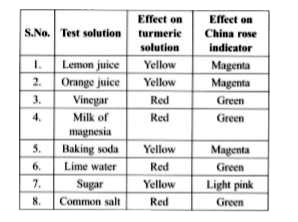
Identify the incorrect observations.
1, 2, 4, 6
3,5,8
1, 3, 6, 8
4,7,8
The correct Answer is:B
Turmeric solution remains yellow in acidic solution while it turns red in basic solution.
China rose indicator turns magenta in acidic solution and green in basic solution.
Topper's Solved these Questions
Similar Questions
Ekta and Vaibhav performed an experiment and found refractive indices of various media as mentioned in the following table. Observe the table and answer the questions based on it.
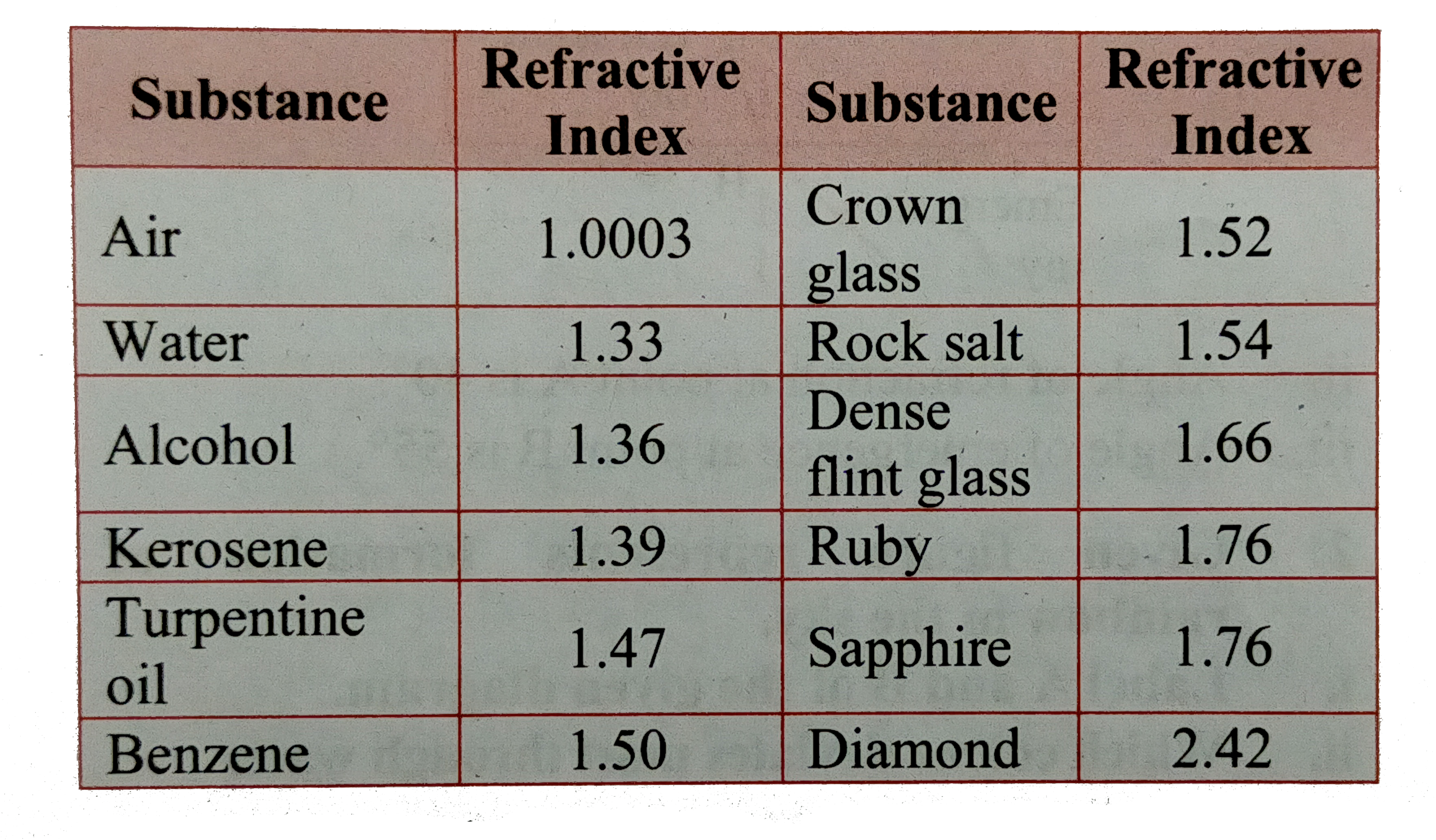
Arrange the following substances from denser to rarer medium. Benzene, Alcohol, Water, Turpentine oil, Rock salt
View SolutionEkta and Vaibhav performed an experiment and found refractive indices of various media as mentioned in the following table. Observe the table and answer the questions based on it.
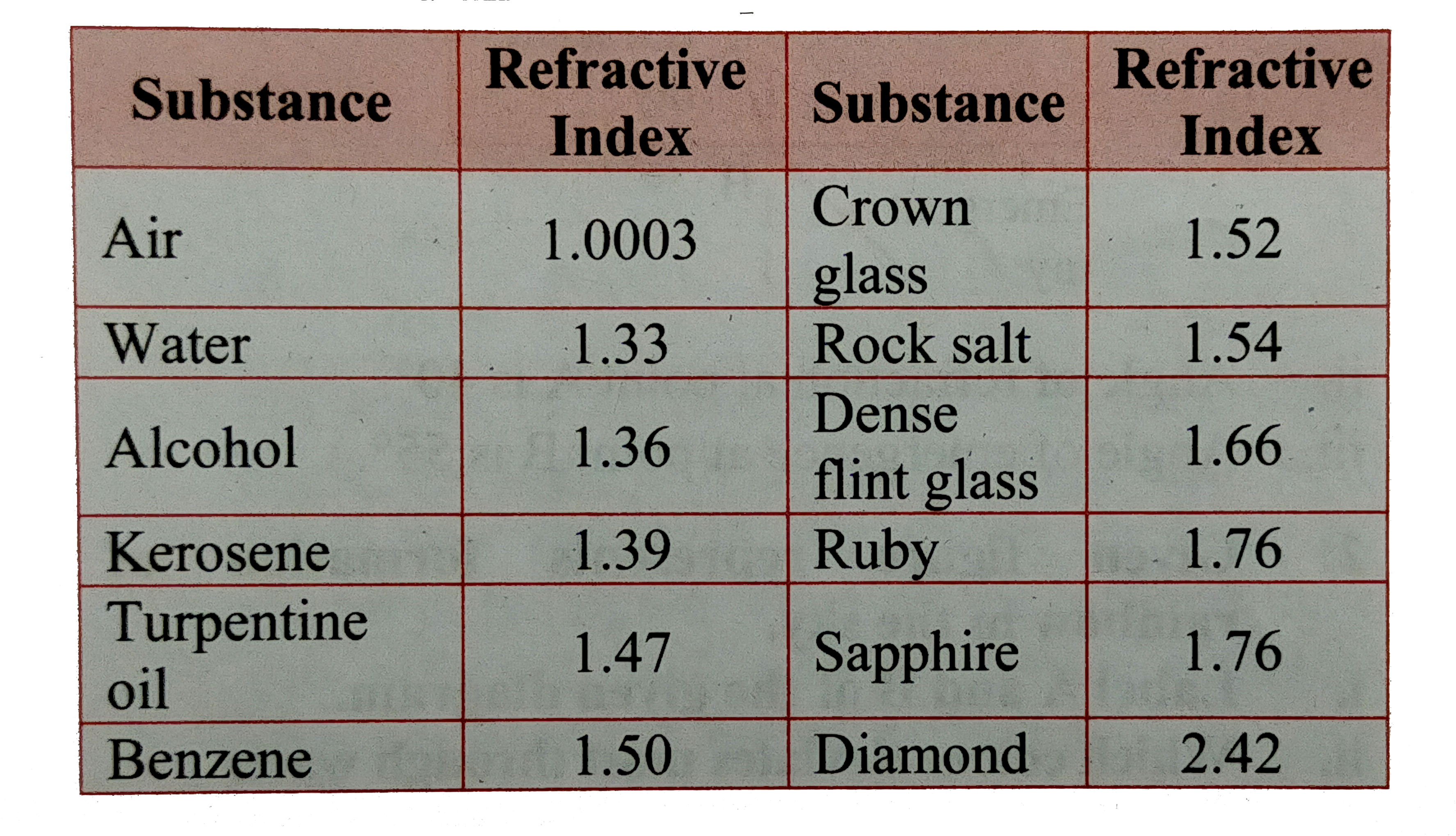
From the above table, mention the rarest and most dense media.
View Solution
Knowledge Check
Smita performed an experiment to find the pressure exerted by different faces of a cube of side 4cm on a loose sand she observed that pressure exerted by the cube
Ais same for each faeBis different for each faceCis dependent on the volume of cubeDis dependent on the total area of the cubeSakshi performed two experiments as shown in figure 1 and 2, and recorded her observations in the table.
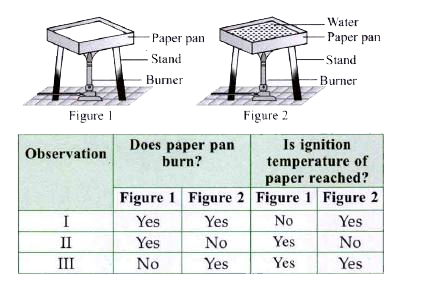
Find out the correct observation and the reason behind it from the options given below.AI, paper has a higher ignition temperature than water.BII, fireproof paper pan is used in figure 2.CIII, paper is non-inflammable.DII, heat supplied to the paper pan is transferred to water by conduction, so ignition temperature of paper is not reached in figure 2.A student performs an experiment on finding the focal length of a convex lens by keeping a lighted candle on one end of laboratory table, a screen on its other end and the lens between them as shown in the figure. The positions of the three are adjusted to get a sharp image of the candle flame on the screen.
If now the candle flame were to be replaced by a distant lamp on a far away electric pole, the student would be able to get a sharp image of this distant lamp on the screen by moving :
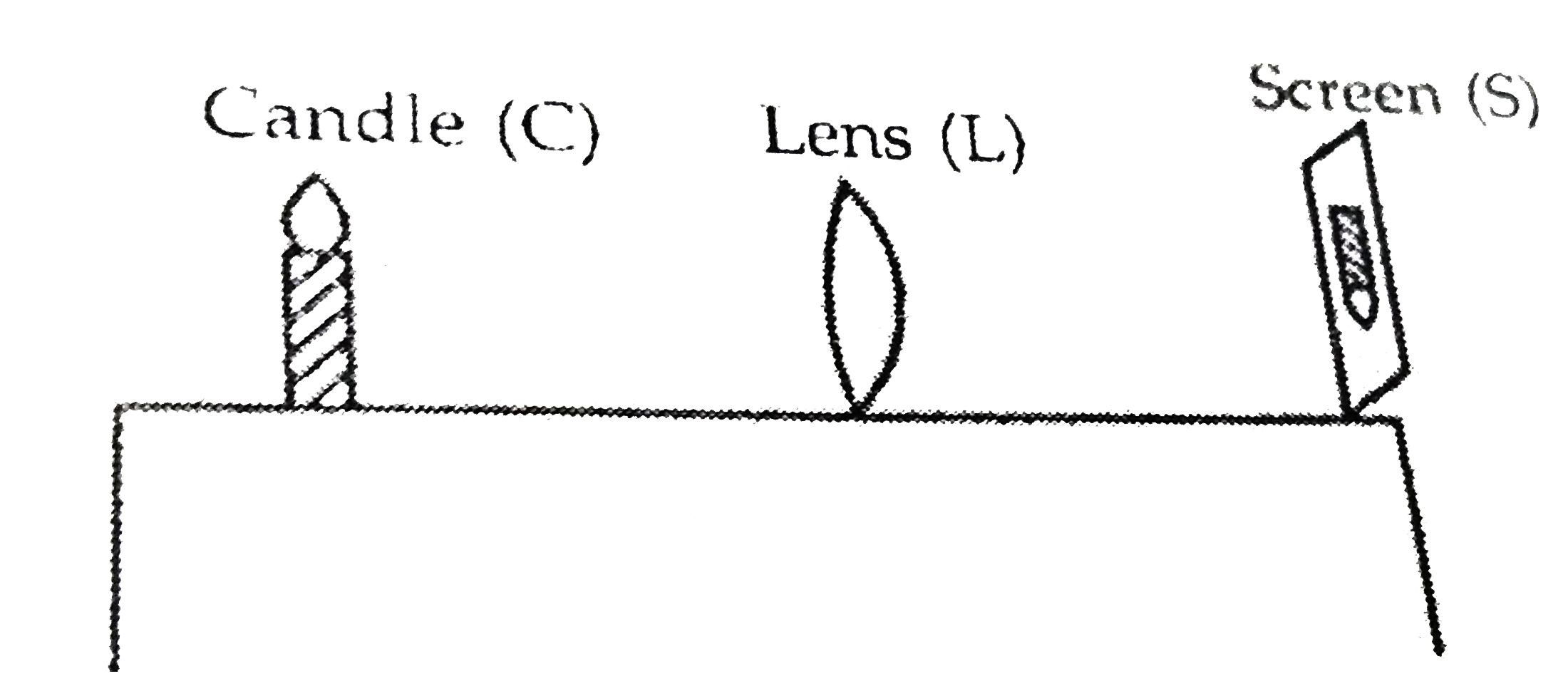 Athe screen towards of the lens or the lens towards the screen.Bthe screen towards of the lens or the lens away from the screen.Cthe screen away from the lens or the lens towards the screen.Dneither the screen nor the lens
Athe screen towards of the lens or the lens towards the screen.Bthe screen towards of the lens or the lens away from the screen.Cthe screen away from the lens or the lens towards the screen.Dneither the screen nor the lens
Rohit and Mayuri conducted two experiments to study the types of chemical reactions as shown in the given figures.
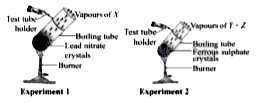
They recorded their observations as :
I. In experiment 1, yellow residue is left behind while in experiment 2 reddish brown solid is left behind.
II. In both experiments, two different gases were given out.
III. The colourless gas evolved in experiment 1 extinguishes the glowing splint while the gas evolved in experiment 2 turns green solution of acidified KMnO4 orange.
IV. X is reddish brown gas while gases Y and Z both have burning sulphur smell.
The incorrect observation(s) is/are
View SolutionEkta and Vaibhav performed an experiment and found refractive indices of various media as mentioned in the following table. Observe the table and answer the questions based on it.
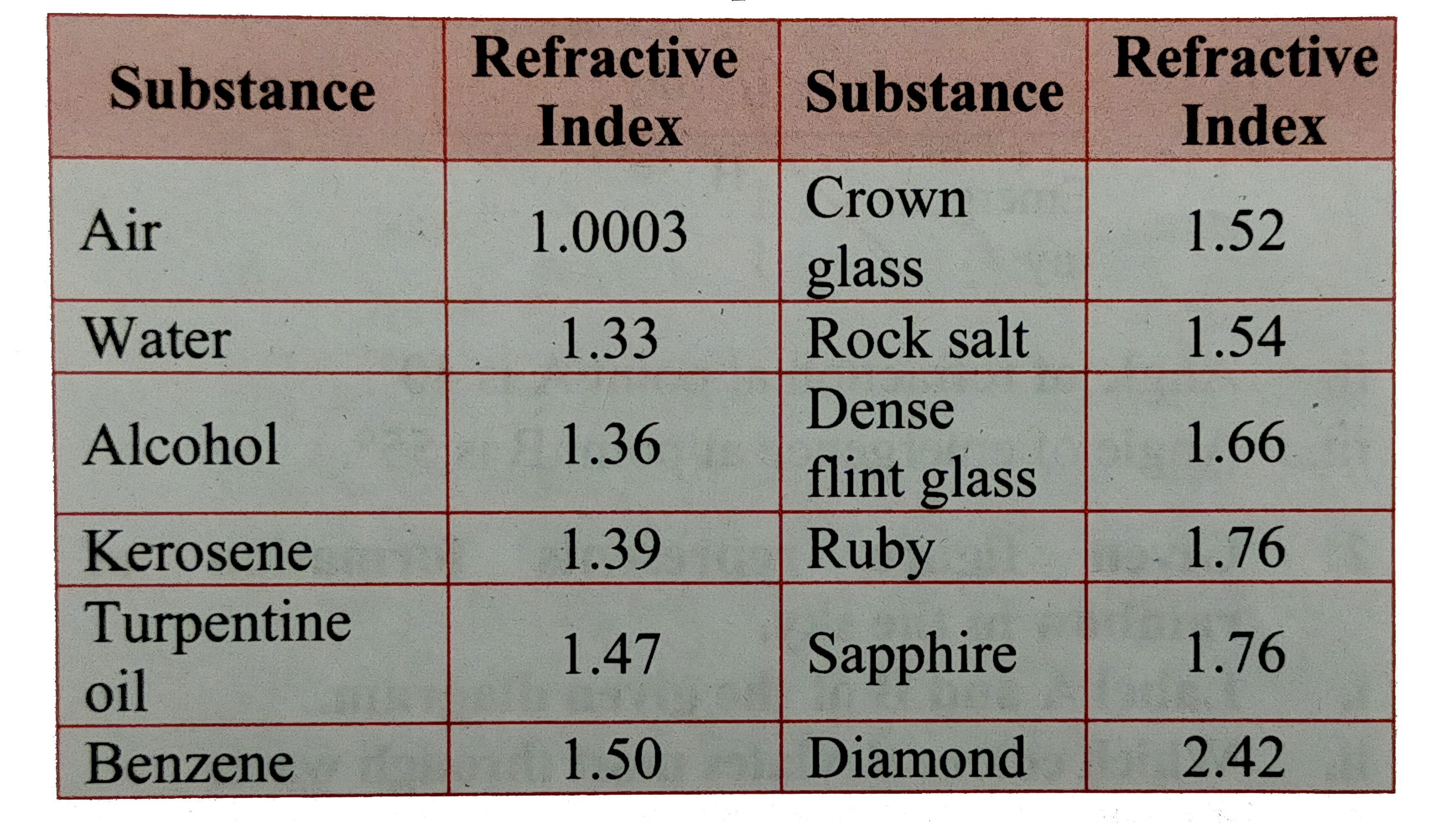
What is the value of refractive index of rock salt with respect to water?
View SolutionAbhinav is a student of class IX. One day all the students were performing experiments in the science laboratory. Just then, the chemistry teacher, Mrs. Prasad, came to the laboratory. She had three beaker in her hands labelled A, B and C. All the beakers contained colourless liquids which looked exactly the same. Mrs. Prasad turned to the students and said that one of the beakers contained a pure substance whereas the other two beakers contained solutions of the same solute in the same solvent but different concentrations. She also told the students that the weight one of the three beakers A, B and C were 110g, 120g and 100g respectively. Mrs. Prasad wanted one of the students to find out experiementally which beaker contained a pure substance and which two beakers contained solutions. She also wanted them to show experimentally two properties which could tell why the solutions are considered mixtures, even though they are homogeneous substances. Mrs. Prasad wanted one of the the students to find out experimentally which beaker contained a pure substance and which two beakers contained solutions. She also wanted them to show experimentally two properties which could tell why the solutions are considered mixtures, even though they are homogeneous substances. Mrs. Prasad allowed them to use any required apparatus from the laboratory for the purpose. Abhinav offered to perform the experiements to distinguish between the pure substance and solutions and also to show experimentally why solutions are considered mixtures.
(a) What did Abhinav do to find out which of the given liquids is a pure substances and which liquids are solutions ? What were the observations made by Abhinav ?
(b) Whay did Abhinav conclude form the above observations ?
(c) Which property of the pure substance is exhibited by this experiment ?
(d) Which properties of a solution are exhibited in this experiement ?
(e) What values are displayed by Abhinav in this episode ?
View SolutionRohit and Mayuri conducted two experiments to study the types of chemical reactions as shown in the given figures.

They recorded their observations as :
I. In experiment 1, yellow residue is left behind while in experiment 2 reddish brown solid is left behind.
II. In both experiments, two different gases were given out.
III. The colourless gas evolved in experiment 1 extinguishes the glowing splint while the gas evolved in experiment 2 turns green solution of acidified KMnO4 orange.
IV. X is reddish brown gas while gases Y and Z both have burning sulphur smell.
The incorrect observation(s) is/are
View SolutionYou are provided with aqueous solutions of three salts - A,B and C,2-3 drops of blue litmus solution, red litmus solution and phenophtanlein were added to each of these solution in separate experiment. The change in colour of different indicators were recorded in the following table :

On the basis of above observation, identify A,B, and C from the following options :
View Solution
